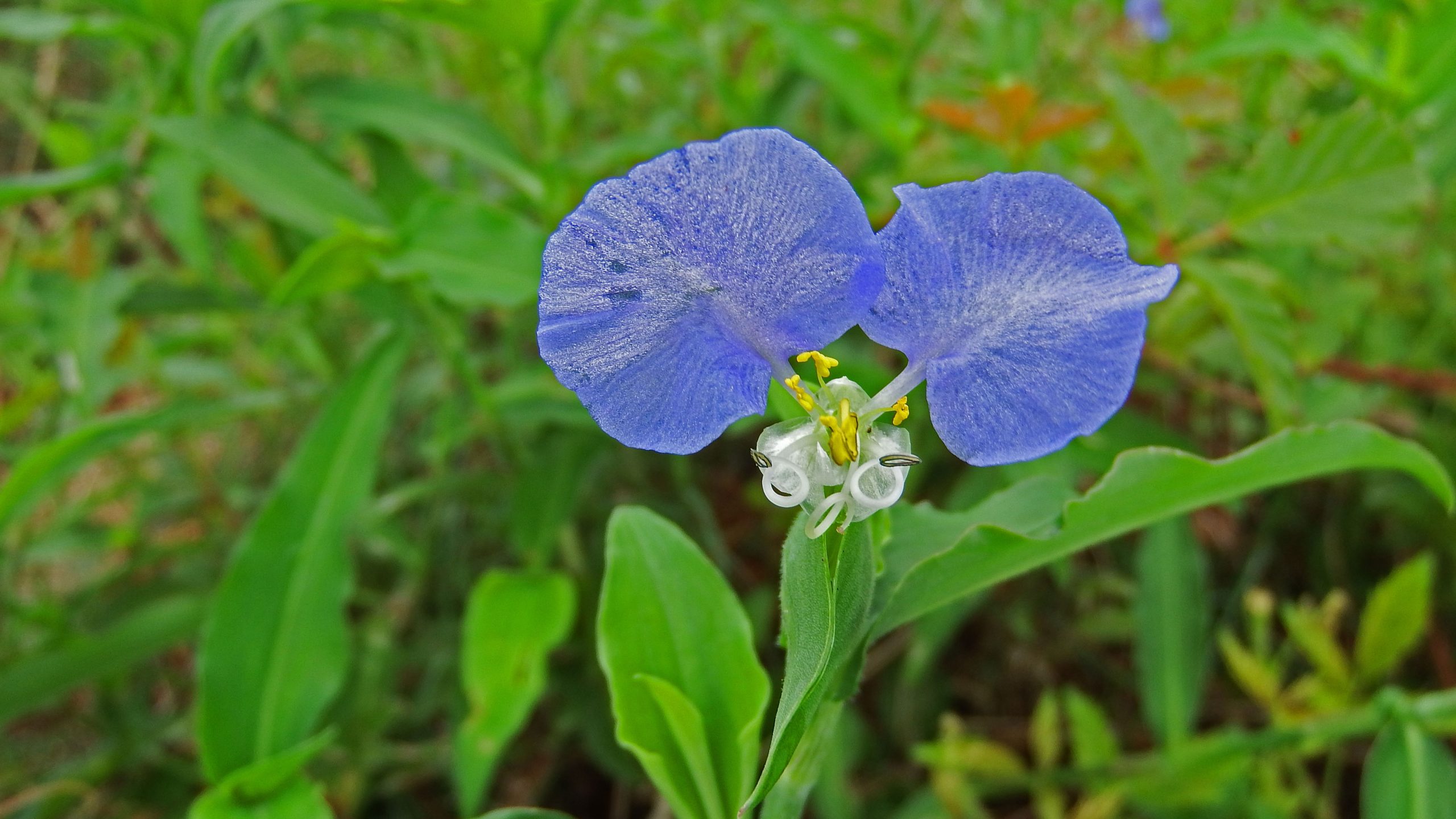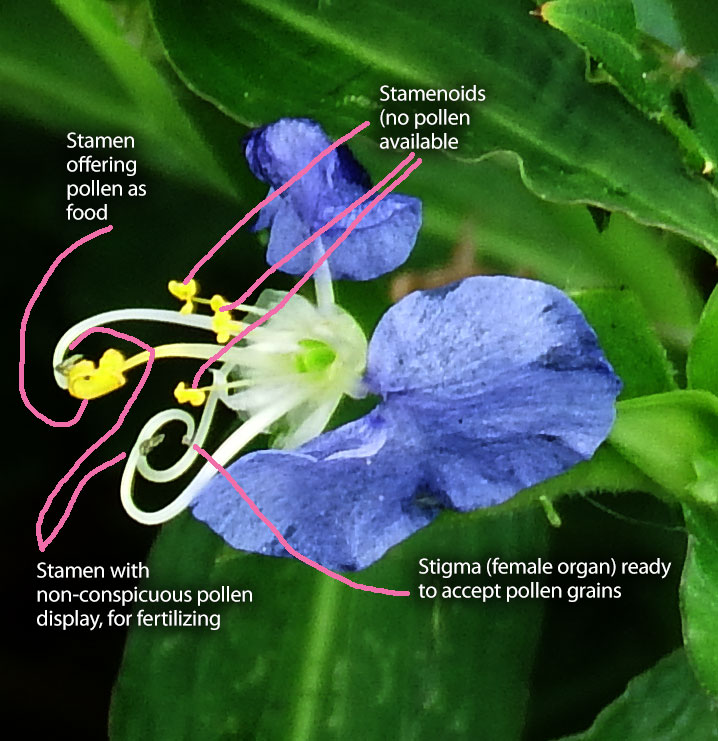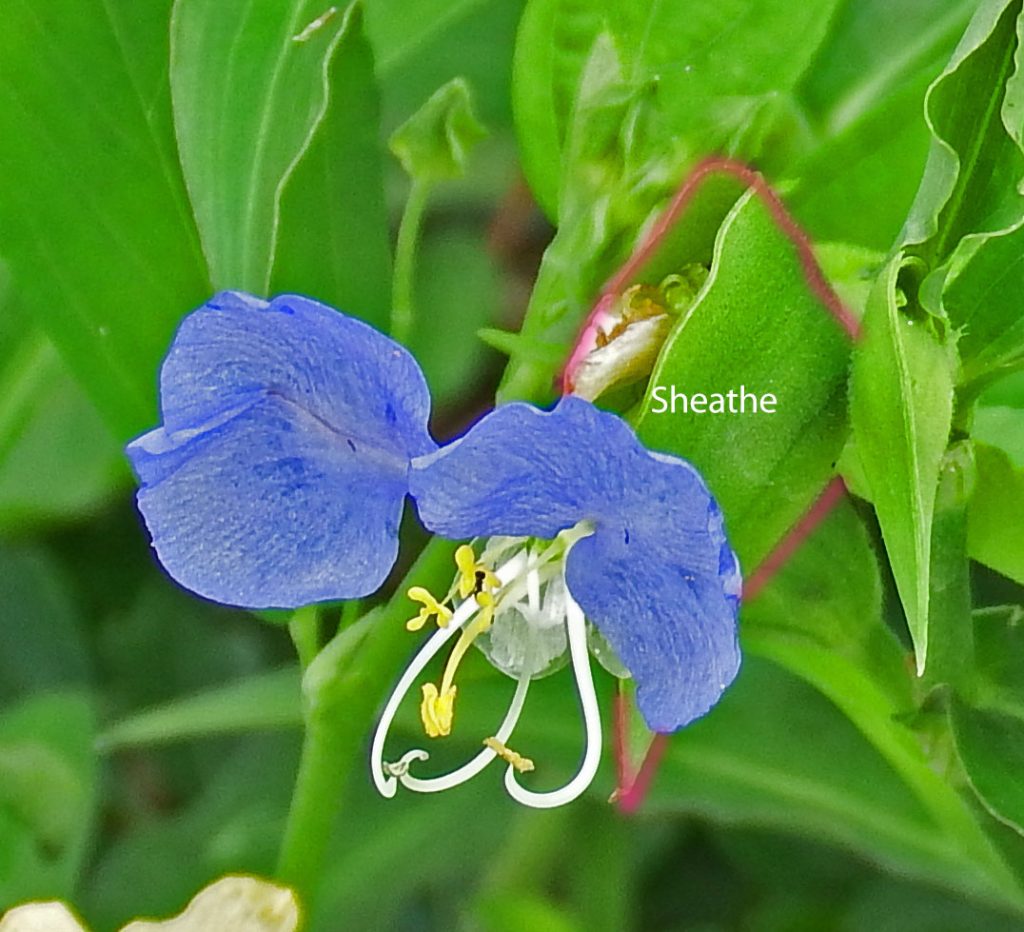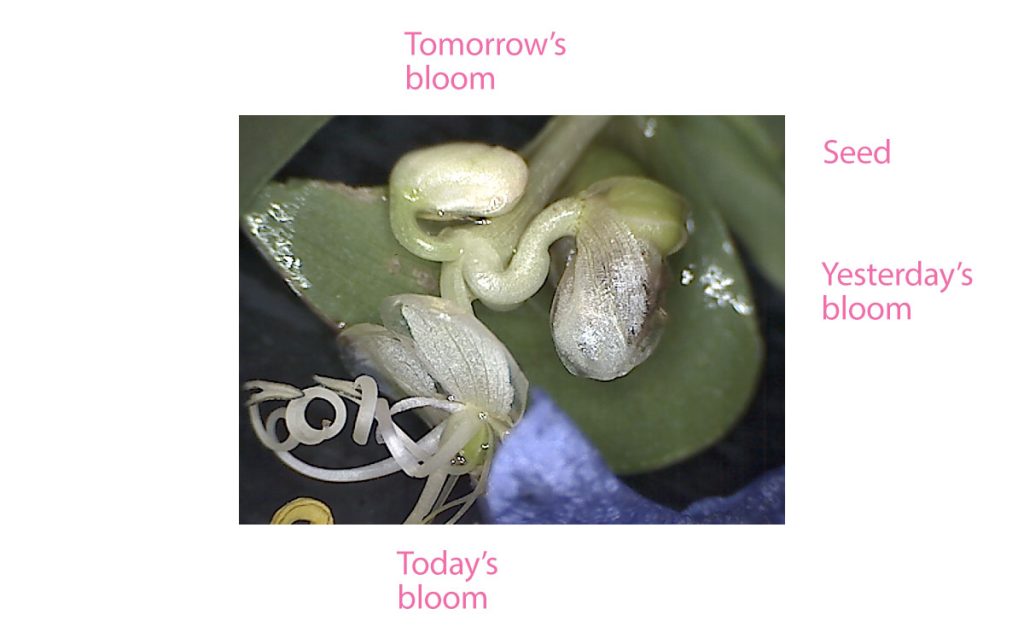Dayflowers

I have fallen down a rabbit hole.
It started so innocently. I saw a whitemouth dayflower that had a very flamboyant presentation. I took a few photos (that’s one of them, above) and posted them to iNaturalist, thinking that this might be a different type of dayflower. Nope. Same kind. Commelina erecta.
I thought I still might be able to get a blog post out of them so I dug in a bit. And I am lost.
Let’s start with the pollinator issue. There is a whole beloved bunch of insects that we affectionately refer to as pollinators. People put in whole gardens designed to attract pollinators and pamper pollinators. But that is a very plant-centric point of view. The insects see themselves as nectivores. They don’t go from flower to flower spreading pollen because they are angelic. They go from flower to flower because they live on sugar water and that’s what nectar is. The fact that they get some pollen on them while guzzling is not the point. Unless you are a plant. In which case, you’re running an open bar for a bunch of lushes in exchange for their assistance in the bedroom.
But not our dainty dayflower. This is one of very few flowers that offer no nectar. Getting help with pollination is almost always a matter of offering nectar or being the kind of plant that can just let the wind take care of things. But the dayflower puts all her marbles on pollen.
While most insects who visit flowers live on nectar, they often need the pollen to feed their larval stages, they also nibble pollen themselves, and there are insects who live almost entirely on pollen. So that’s the bunch our dayflower has to lure in. She does it with pizazz, stealth and a close eye on the pocketbook.
See those bright yellow bits that jump out at you against those lovely blue petals? They show up best against the blue if you approach from below, and our dayflower very much wants you to approach from below. Those yellow bits scream pollen. They are in the right place and are the right color. Except three of them are frauds. They are stamenodes – pretend stamens (the organ that actually holds the pollen). The business end of things from the plant’s point of view are those little translucent swirly things hanging down hardly noticeable against that puny white petal. The two outer translucent strands are pollen presenting male organs and the central one is the sticky and awaiting female organ. In other words, this is where the business of reproduction takes place quietly and away from all that yellow up there. The business end is a toll booth; you can’t get up there without rubbing a bit down here and hey presto, a seed is born.

The offer of pollen isn’t entirely a sham. That strategy wouldn’t last for long and this plant is so successful that it is found in one form or another on almost every continent. That central yellow tongue is a functioning pollen producer, but scholarly articles disagree on whether the pollen it produces is as viable as what comes from those two below. It takes energy to create viable pollen and it seems our dayflower skimps a bit on the viability of the pollen in that big yellow to be nibbled upon stamen, saving the good stuff for the one’s you hardly notice at the bottom.
So, thats one bit of weirdness. The next is the whole jack-in-the-box situation.
These flowers got their common name from the fact that they last only a day. Honestly, in our climate, they are lucky to be looking good at noon. They are incredibly fragile. If you handle them at all they liquefy.
Each flower head on our dayflower has four blooms within a clasped sheathe. In the morning, one flower uncurls through the sheathe and sings the siren song of pollen as long as she can. Then, that flower withers and curls, retreating to the sheathe.

I added a red outline to help you see what the sheathe is. If you look closely, you can see the remnants of yesterday’s bloom tucked back into the sheathe.
If this flower was not cross pollinated by a visiting insect in the 6 hours or so that the flower was on display, it will self pollinate upon curling up. Self pollinating is not as adaptive as cross pollination, but it does at least insure that the plant gets another chance at a cross by seeding itself and trying again. The flower curls up so tightly that it curls right back into the sheathe.
The next day, it is the turn of a new flower to push its way into the world. But yesterday’s flower isn’t doing nothing. Any pollen that landed on the stigma is dropping a pollen tube into that flower’s ovary and a seed is starting to grow.
On the third day, the third flower is shining brightly, the seed from day 1 is looking nice and shiny green, the flower from day 2 (returned to the sheathe) is brownish and that fourth flower is getting ready to bloom. By the end of four days, four seeds should be getting set and the next inflorescence is getting ready to start a whole new cycle.
I have made an assumption that these events take place on successive days. In some of the literature, it is suggested that these may take place two to four days apart. But the mechanics are the same. In the photo below, I removed the sheathe so you could see what was going on inside.

This insignificant, ubiquitous plant couldn’t get more fascinating, and the number of scholarly article about it are many. Deadline pressures have convinced me to stop reading and start writing. But there is one more wonderful thing about this flower that I have to mention. All flowers in the family Commelina (and there are abut 170 of them) present an arrangement of two prominent petals and a third that is insignificant. The taxonomic name Commelina was bestowed by Carl Linnaeus (the father of taxonomy) himself. He named them after three related Dutch botanists, quipping that two Commelin botanists were conspicuously successful and the third “died before accomplishing anything in Botany.”

